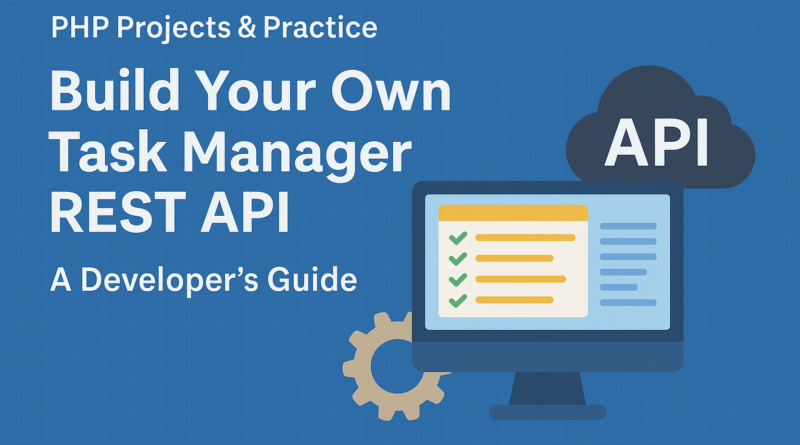PHP Projects & Practice:- Build Your Own Task Manager REST API: A Developer’s Guide
Build Your Own Task Manager REST API: A Developer’s Guide
Feeling overwhelmed by your to-do list? Imagine a task manager that’s not just an app, but a powerful backend you control. That’s exactly what a REST API for a task manager allows you to create! Whether you’re a budding developer or looking to sharpen your skills, building this kind of API using PHP is an excellent and practical project.
Why a REST API for a Task Manager?
Think about it: Your task list lives on your phone, your laptop, maybe even a smart display. A RESTful API provides the central “brain” for all these devices to talk to each other. It’s the universal translator that lets your data flow seamlessly, no matter where you access it. This makes your task manager incredibly flexible and scalable.
What You’ll Learn (and Why It’s Awesome)
This project isn’t just about managing tasks; it’s about mastering fundamental web development concepts:
- API Development: You’ll learn the core principles of designing and building a RESTful web service. This is a highly sought-after skill in today’s tech landscape.
- HTTP Methods: Get hands-on with GET, POST, PUT, and DELETE – the verbs of the web that let you read, create, update, and remove your tasks.
- JSON Data Format: Understand how to send and receive data in JSON, the lightweight and human-readable format that’s the standard for web APIs.
- Database Interaction: You’ll connect your PHP API to a database (like MySQL) to store your task information securely and efficiently. This is crucial for any data-driven application.
- Authentication & Authorization (Optional but Recommended): Make your API secure! Learn how to protect your task data so only authorized users can access or modify it.
- Error Handling: Build robust APIs that gracefully handle unexpected situations and provide helpful feedback.
Your Toolkit: PHP Power!
PHP is a fantastic choice for building this API. It’s widely used, has excellent database connectivity, and a vast ecosystem of tools and resources. You’ll likely use:
- PHP: The core scripting language.
- Composer: For managing PHP dependencies.
- A Web Server: Apache or Nginx to serve your API.
- A Database: MySQL or PostgreSQL for storing your tasks.
- A Text Editor/IDE: Like VS Code or PhpStorm for writing your code.
Getting Started: The Basic Structure
At its core, your task manager API will involve:
- Routes: Defining specific URLs for different actions (e.g.,
/tasksto get all tasks,/tasks/{id}to get a specific task). - Controllers: PHP files that handle the logic for each route, interacting with your database.
- Models: Representing your task data structure and handling database operations.
Practical Steps to Success
- Plan Your Endpoints: Decide on the URLs and HTTP methods for each task operation (e.g.,
GET /tasks,POST /tasks,PUT /tasks/{id},DELETE /tasks/{id}). - Set Up Your Database: Create a
taskstable with fields likeid,title,description,due_date,status. - Code Your API: Start with the basic CRUD (Create, Read, Update, Delete) operations.
- Test, Test, Test: Use tools like Postman or Insomnia to send requests to your API and verify its responses.
Beyond the Basics: Elevate Your API
Once you have a working foundation, consider adding advanced features:
- User Management: Allow multiple users to have their own task lists.
- Filtering & Sorting: Implement options to filter tasks by status or sort by due date.
- Search Functionality: Let users search for specific tasks.
- Category/Tag Support: Organize tasks with categories or tags.
- Rate Limiting: Protect your API from abuse.
Ready to Build?
Creating a REST API for a task manager is an incredibly rewarding PHP project. It solidifies your understanding of core backend development principles and gives you a tangible, useful application. Dive in, experiment, and empower yourself with the skills to build the next generation of web applications!




